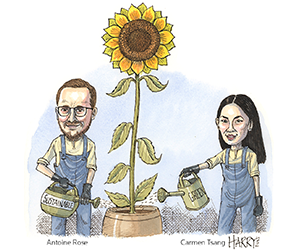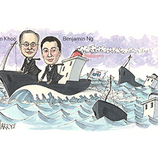High standards
Competition in the ESG space became fiercer, but Credit Agricole continued to deepen its product range and help issuers on their transition journeys, while maintaining its principles. That earned it the title of IFR Asia’s ESG House of the Year.
![]()
Credit Agricole stood out in the field for the breadth and quality of its ESG offering this year, even as more banks ploughed in extra resources.
Plenty of banks have agreed to phase out new coal financings, but Credit Agricole is looking beyond that. It needs to meet tough disclosure requirements in Europe, and aligns its Asian business with them, too.
“We have dropped some bond mandates because they did not align with our principles,” said Antoine Rose, head of sustainable banking for Asia Pacific and the Middle East at Credit Agricole.
“We have the ability to subsidise the cost of green or sustainability-linked loans, but if some loans are not structured in line with the best market practices and not ambitious enough, it’s our duty to not support them.”
Conversely, Credit Agricole has not abandoned issuers with a big carbon footprint.
“We are engaging with a lot of issuers from polluting industries to talk about transition financing or sustainability-linked financing to see if they have a commitment to a transition pathway,” said Carmen Tsang, head of Greater China sustainable banking.
That has meant working with Korea Electric Power Corp, for example, to plot its transition to a coal-free future. Credit Agricole does not provide any conventional corporate finance to Kepco, but limits its activities to sustainable finance.
Asia saw plenty of variation in the ESG bond market this year, and Credit Agricole was behind many of the new developments.
“The labelled ESG bond market is quite mature, but we really want to bring tailor-made solutions for our clients,” said Tsang. “We want to make sure that whatever our clients’ financing needs are, we will be able to structure and integrate their ESG vision into it.”
China Construction Bank’s US$1.15bn dual-tranche sustainability-linked bond was the first issue under the “common ground” taxonomy that compares Chinese and EU green standards then applies the more stringent of the two, as well as the first US dollar SLB globally from a commercial bank.
Credit Agricole was also green structuring adviser for Industrial and Commercial Bank of China’s US$3.2bn-equivalent multi-currency offering in October, as ICBC reinvented its green bond framework to align with international and Chinese green standards.
Another of its deals, Bank of China’s sustainability re-linked bond offering, tied to the performance of a pool of sustainability-linked loans, was an evolutionary step rather than a product that will be widely emulated, but it was the first time an Asian US dollar SLB had incorporated a coupon step-down feature.
In the loan space, Credit Agricole was sole structuring adviser when Beijing Enterprise Clean Energy brought a US$300m-equivalent green loan, and joint MLA when Singapore’s Olam International raised US$1.45bn in sustainability-linked financings.
When electric vehicle maker BYD brought China’s first internationally rated green ABS, Credit Agricole was a member of the syndicate.
Sovereigns called upon Credit Agricole’s expertise, too. It was joint structuring adviser for South Korea’s green framework, supporting its first such issue in euros, as well as joint structuring adviser for Indonesia’s sustainable development goals euro offering, the first by an Asian sovereign.
In addition, it advised the Hong Kong Special Administrative Region as it became the world’s first government issuer to launch a global MTN programme dedicated to green bonds, which helped make the issuance process more efficient.
Credit Agricole was framework structuring adviser and arranger when the Asian Development Bank brought a dual-tranche blue bond offering in Australian and New Zealand dollars in September 2021, and sole structuring adviser on sustainability when the Asian Infrastructure Investment Bank was setting up its sustainable development bond framework.
The bank has arranged solidarity loans in Europe, under which issuers, arrangers and investors give a share of their cost savings, fees and returns, respectively, to charity. In May, its Taipei branch issued the first solidarity bond, a NT$1.7bn (US$62m) seven-year green bond offering that benefited Plastic Odyssey, an ocean waste charity.
It pioneered the first green interest rate swap in Asia Pacific for Goodman Interlink, and then brought the product to Singapore for property company LOGOS.
“We now have the A to Z of ESG,” said Rose.
To see the digital version of this report, please click here
To purchase printed copies or a PDF, please email gloria.balbastro@lseg.com













